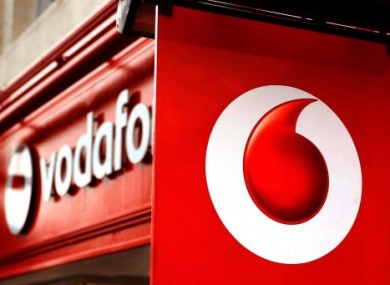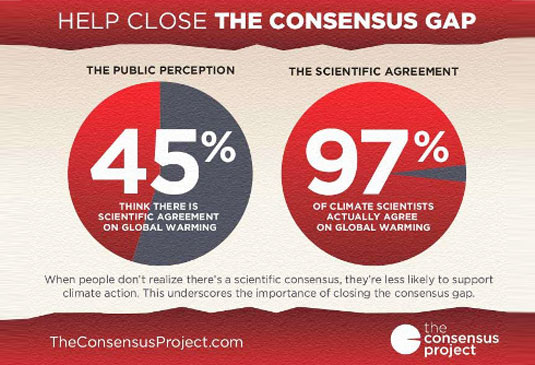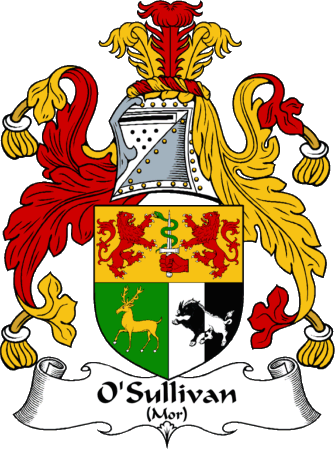Rose of Tralee’s crest name on silverware two days before final night
Conspiracy theories are mounting after the Rose of Tralee’s name and family crest appeared on the prize of silverware cutlery two days before the winner was announced.
Several eagle-eyed viewers noticed that the family crest of eventual winner, theTexas rose Haley O’Sullivan, had already been emblazoned on to the winner’s Newbridge Silverware cutlery on Monday night.
Haley won the coveted crown last night, beating out 31 other contestants from around the world.
As tradition dictates, the winner receives a Newbridge Silverware cutlery set with her family crest as part of her prize.
Viewers noticed that the O’Sullivan family crest had already been engraved into the set on Monday night, when the cameras flashed to the prize.
After M/s O’Sullivan appeared on The Ray D’Arcy Show on Today FM earlier today, several listeners contacted the station in order to query whether or not the winner had been chosen prior to the live broadcast.
“Last night’s winner Hayley O’Sullivan’s crest was already engraved on the cutlery on Monday night,” one listener said. “It was shown by the camera man before the best escort was announced. Coincidence?!! Not likely!”
Another listener wrote: “I could be wrong but I’m nearly sure on the first night, when showing the silver cutlery during the escort award, O’Sullivan was engraved on the knife…If so this would mean the winner was picked before the live show.”
John Drummey from the festival office told The Ray D’Arcy Show on Today FM: “Yes apparently that was an O’Sullivan family crest on the cutlery on Monday night. That’s just a coincidence. Newbridge just wanted to show that they can provide cutlery with the family crest. The escort will have his own family crest engraved on it.”
The show also contacted Newbridge Silverware, who responded: “That was purely coincidental. RTE filmed promotional stock and the O’Sullivan crest was picked because it’s a good Kerry name. That is not the actual cutlery that the winning Rose or escort receives. They will have their own family crest engraved on it.”
VODAFONE GROUP, Reclaim’s €67m in tax paid to the Irish Government.


In 2009, the Vodafone Group made a massive settlement with UK authorities, linked to its Irish unit, it has emerged.
Britain’s Guardian newspaper has reported that accounts filed with the Irish Company Registration Office (CRO) revealed the deal.
The paper revealed how Vodafone used an Irish subsidiary, Vodafone Ireland Marketing, to collect royalty payments from companies and joint ventures operating around the world.
It did this to take advantage of Ireland’s 12.5pc corporation tax rate, compared to the 28pc rate in Britain in the period between 2008 and 2010.
DIVIDENDS: Vodafone set up a company in Leopardstown, Dublin, in 2007 that originally did not employ any staff but was reporting a turnover of €380m a year.
Its use of the company helped to send dividends of more than €1bn to the low tax jurisdiction of Luxembourg.
The payments included a final instalment due this year of €142m and came from profits made after taking advantage of Ireland’s low corporation tax rates. The overall size of the settlement with Her Majesty’s Revenue and Customs (HMRC) was not revealed.
However it involved Vodafone reclaiming €67m from the Irish Government in tax that should have been paid in the UK.
Dublin property prices rise 8% over last 12 months according to CSO
Apartment prices in the capital were 11.6 per cent higher in July
Property prices in Dublin have increased 8 per cent in the last 12 months, according to new figures released by the Central Statistics Office.
Dublin house prices were 7.5 per cent higher last month than July 2012, while apartment prices were 11.6 per cent higher.
The CSO said house prices in Dublin were 52 per cent lower now than at their peak in early 2007, while apartment prices were 59 per cent lower.
The fall in the price of residential properties in the rest of Ireland is somewhat lower at 48 per cent.
The price of residential properties in the rest of Ireland fell by 0.1 per cent in July compared with an increase of 0.3 per cent in July last year.
Goodbody economist Dermot O’Leary said residential prices in Dublin are now rising at their fastest annual pace since May 2007, due to tightening supply conditions in the capital.
“Of some concern is the fact that this acceleration in price inflation has come without any pick-up in mortgage lending,” he said.
Too much Copper in people's diets linked to Alzheimer’s disease


A LIFE-TIME OF TOO MUCH COPPER IN OUR DIETS MAY BE CONTRIBUTING TO ALZHEIMER’S DISEASE, US SCIENTISTS CLAIM.
However, research is divided, with other studies suggesting copper may actually protect the brain.
The latest study in Proceedings of the National Academy of Sciences showed high levels of copper left the brain struggling to get rid of a protein thought to cause the dementia.
Copper is a vital part of our diet and necessary for a healthy body.
Tap water coming through copper pipes, red meat and shellfish as well as fruit and vegetables are all sources of dietary copper.
Barrier: The study on mice, by a team at the University of Rochester in New York, suggested that copper interfered with the brain’s shielding – the blood brain barrier.
Mice that were fed more copper in their water had a greater build-up of the metal in the blood vessels in the brain.
The team said this interfered with the way the barrier functioned and made it harder for the brain to get rid of a protein called beta amyloid.
One of the hallmarks of Alzheimer’s disease is the formation of plaques of amyloid in the dying brain.
Lead researcher Dr Rashid Deane said: “It is clear that, over time, copper’s cumulative effect is to impair the systems by which amyloid beta is removed from the brain.”
He told the BBC that copper also led to more protein being produced: “It’s a double whammy of increased production and decreased clearance of amyloid protein.
“Copper is a very essential metal ion and you don’t want a deficiency and many nutritious foods also contain copper.”
However, he said taking supplements may be “going overboard a bit”.
Mixed evidence: Commenting on the latest findings, Chris Exley, professor of bioinorganic chemistry at Keele University, said there was “no true consensus” on the role of copper in Alzheimer’s disease.
His research on human brains reached the opposite conclusion: “In our most recent work we found evidence of lower total brain copper with ageing and Alzheimer’s. We also found that lower brain copper correlated with higher deposition of beta amyloid in brain tissue.
“He said at the moment we would expect copper to be protective and beneficial in neurodegeneration, not the instigator, but we don’t know.
“The exposure levels used mean that if copper is acting in the way they think it does in this study then it must be doing so in everyone.”
Dr Eric Karran, from Alzheimer’s Research UK, said: “While the findings present clues to how copper could contribute to features of Alzheimer’s in mice, the results will need replicating in further studies. It is too early to know how normal exposure to copper could be influencing the development or progression of Alzheimer’s in people. “
Dr Doug Brown, from the Alzheimer’s Society, said: “Considering copper is a vital mineral for the body, people should treat these results with caution and not cut it out of their diet. More research is needed to understand the role that copper might play in the brain.”
Dogs used as ‘early warning system’ for low blood sugar levels in people with diabetes
 v
v 
Dogs could be trained to warn diabetic patients when their blood sugar levels are about to become low, according to a new study.
Specially trained “glycaemia alert dogs” were able to detect when their owners’ blood sugar levels were outside their normal range and warn them of the fact, researchers found.
It is believed that the dogs are able to detect potential danger because their keen sense of smell can detect chemical changes in their owner’s sweat or breath.
Similar studies have suggested that dogs may be able to detect cancer by catching the scent of chemical compounds released by tumours.
In the new project, funded by pet training specialists The Company of Animals, studied seventeen dogs which had been trained to spot when their owner’s blood sugar levels began to drop too low or rise too high.
Some of the dogs had been donated and trained by the Medical Detection Dogs charity, while others belonged to participants and were specially trained for the study.
Results published in the PLOS ONE journal showed that all seventeen patients reported benefits, including fewer ambulance call-outs and fainting episodes, and greater independence.
Data recorded by the patients suggested that the dogs had been able to warn their owners of high or low blood sugar with an accuracy significantly above the level of chance, although the success rate varied from animal to animal.
Dr Nicola Rooney, who led the study, said current electronic systems designed to do the same job have “numerous limitations” and that dogs could offer “significant improvements”.
She added: “Some of the owners also describe their dogs respond[ing] even before their blood sugars are low but as they start to drop, so it is possible that the dogs are even more effective than this study suggests.
“While it is believed that dogs use their acute sense of smell to detect changes in the chemical composition of their owner’s sweat or breath to respond to glycaemic control, further research is now needed to further understand how dogs carry out this amazing task.”
Scientists ‘95 % cent certain’ that climate change is man-made


UN panel estimates sea levels could rise by 2ft 8in by the end of the century in latest draft report
Scientists are more certain than they have ever been that humans are causing climate change and believe that sea levels could rise by up to 2ft 8in by the end of the century.
These are among the key findings likely to be published next month in the most authoritative and comprehensive report ever conducted into climate science – the UN Intergovernmental Panel on Climate Change’s (IPCC) fifth assessment, known as AR5.
According to a draft of the report, the certainty that humans are the main cause of climate change has risen to 95 per cent, from 90 per cent in the previous – fourth – assessment six years ago. This, in turn, was a significant increase on the 66 per cent certainty reached in 2001’s third assessment and just over 50 per cent in 1995.
With every IPCC report there is a key phrase that encapsulates the latest consensus on climate change, which scientists wrangle over for months.
According to a leaked copy of the draft, the key phrase in the forthcoming report will say: “It is extremely likely that human influence on climate caused more than half of the observed increase in global average surface temperature from 1951 to 2010.”
“There is high confidence that this has warmed the ocean, melted snow and ice, raised global mean sea level and changed some climate extremes,” adds the draft, which could be changed before the final version is published in Stockholm in September.
The draft projects that seas will rise by between 29cm and 82cm (11.4 to 32.3 inches) by the end of the century, while greenhouse gas emissions continue to soar.
The latest in a series that began in 1990 and last reported in 2007, AR5 has 840 main authors recruited from 38 of the IPCC’s 195 member countries, with British and American scientists making the biggest contribution.
At more than 3,000 pages, the report is so big that it will be released in three parts over the next 14 months. The first part covers the physical science of climate change. The second instalment will concentrate on the impacts of climate change and how to adapt to them, while the third will examine ways to curb the warming.
The report will also explain why global temperatures, while still increasing, have risen more slowly since the late 1990s despite accelerating increases in the greenhouse gas emissions widely thought to be responsible for climate change.
The draft report says there is “medium confidence” that the slowing of the temperature rise is “due in roughly equal measure” to natural variations in the weather and to other factors affecting energy reaching the earth’s surface. Other factors include an increase in the amount of heat being absorbed by deep oceans.
As with the other IPCC reports, AR5 will be a synthesis of the findings of thousands of peer-reviewed research papers from the past few years. It comes at a crucial time in global climate change politics since it will be the last IPPC report published before the Paris summit in 2015, when the world’s governments have pledged to reach hugely-ambitious and legally-binding targets to reduce their emissions in a bid to limit global warming to 2C, compared to pre-industrial levels.
The report’s authors are being extra cautious with this report after climate sceptics seized on a number of errors in the previous assessment to bolster their case that climate change is greatly exaggerated. The errors included the suggestion that the Himalayan glaciers could melt by 2035.
The key phrase on the likely human influence on climate change in the draft of the latest IPCC assessment strengthens that of 2007’s fourth assessment, which said that “Evidence of the effect of external influences… on the climate system has continued to accumulate since TAR [Third assessment report in 2001]”.
TAR, in turn, concluded in 2001 that “there is new and stronger evidence [than in 1995] that most of the warming observed over the last 50 years is attributable to human activities”. The second assessment report in 1995 said: “The balance of evidence suggests a discernible human influence on global climate.”
Giant leatherback turtle washed up on Wexford strand a whopping 1,000kger
THE ARRIVAL OF A GIANT LEATHERBACK TURTLE MADE A BIG SPLASH AMONG LOCALS IN CULLENSTOWN STRAND, CO WEXFORD OVER THE WEEKEND BUT IT WAS DEAD.
The turtle, as big as an upturned rowing boat, washed up on the beach last Friday.
The Co Wexford coast is a popular feeding ground for these turtles, which arrive en masse every June to feed on jellyfish until early autumn.
A number of dead leatherback turtles washed up off the south coast last year, but this was the first at Cullenstown Strand for some time, Wexford naturalist Jim Hurley said.
“There were people arriving having a look and taking photos over the weekend.
“Often these turtles die after they mistake plastic bags for jellyfish and swallow them.”
Carcass: The cause of the leatherback turtle’s death remains unknown.
John Kinsella of Wexford Naturalists Fieldclub said large leatherbacks could weigh up to 1,000kg – “the best part of a ton” – and be two-and-a-half metres long.
They breed in the Caribbean and are so big not even sharks would bother to attack them.
He said it was likely that the turtle died offshore and the carcass was washed in by the tide: “They don’t beach themselves like whales.”
Mr Kinsella said the biggest recorded leatherback turtle washed up on a beach in Wales about 10 years ago and weighed over one tonne.
The species takes about 50 years to mature and turtles live at least 80 years.
The turtle has since been taken from the beach by council workers and buried.







No comments:
Post a Comment